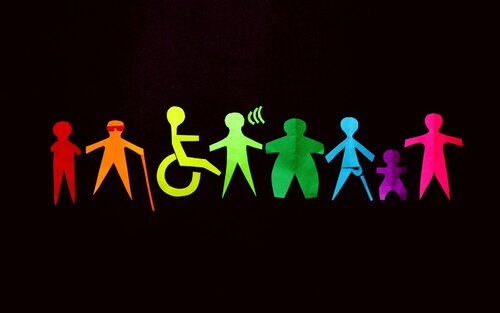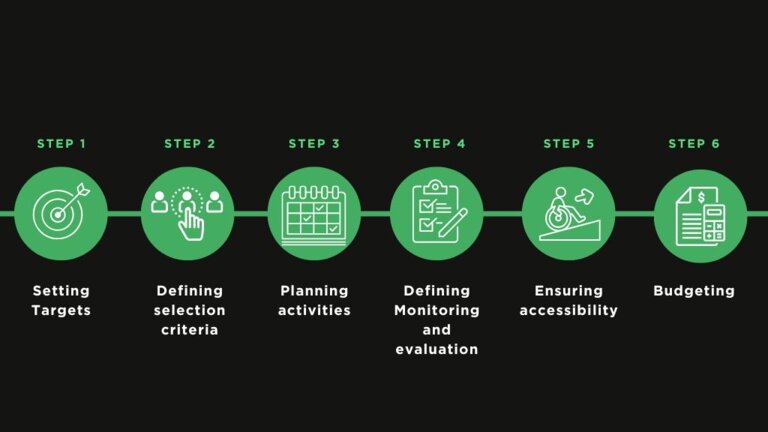Developing a targeting and social inclusion strategy for persons with disabilities
The first step to developing an inclusive programme is developing a targeting and social inclusion strategy. The following guidelines explain exactly how a disability inclusive targeting strategy for persons with disabilities should be designed in accordance with a “twin track approach”.

The first step to developing an inclusive programme is developing a targeting and social inclusion strategy. The following guidelines explain exactly how a disability inclusive targeting strategy for persons with disabilities should be designed in accordance with a “twin track approach”. The response should include both actions to remove barriers to participation in main activities implemented by the project, as well as actions targeted to persons with disabilities themselves, to empower them and enable access on an equal basis with others.
A targeting and social inclusion strategy for persons with disabilities should include the following building blocks:
- Make a commitment. State that you really want to include persons with disabilities in your work. This also means allocating a budget for inclusion, as well as noting down data on persons with disabilities in planning, monitoring and evaluation.
- Train staff. Staff involved in the programme should be trained, so that they are aware of the rights, needs and capabilities of persons with disabilities. Staff is often not aware of the needs of persons with disabilities, and might just overlook them.
- Identify. Identify persons with disabilities in your programme, and refer them to medical care or rehabilitation if they need it. Sometimes having a device can be crucial to participation.
- Remove barriers. Work to remove the attitudinal, environmental and institutional barriers that prevent persons with disabilities from participating.
- Build a network. Work together as government, disability-specific service providers, organisations of persons with disabilities etc.
Overall, it is important that the strategy be designed in accordance with a “twin track approach”. It should include both actions to improve accessibility of the services promoted or supported by the project, as well as actions targeted to persons with disabilities themselves, to enable access on an equal basis with others.
In general, you need to carry out the following actions if you are to have a disability inclusive project:
- Engage persons with disabilities
- Voices of persons with disabilities are reflected in design processes, ongoing implementation activities, monitoring and evaluations.
- Persons with disabilities are meaningfully included as part of the target group of projects.
- Network with other organisations and groups
- Organisations working in the area of disability, including organisations of persons with disabilities have been contacted and included in the project as appropriate.
- Assess activities to ensure they are accessible
- All community consultations are conducted in a way that facilitates the full participation of persons with disabilities (i.e. through choice of physically accessible locations and provision of information in varied formats).
- Build in actions
- Programme and project designs incorporate actions to promote disability inclusion with corresponding indicators to monitor their implementation.
- Learn from our work
- Data has been disaggregated by disability in baseline measures, ongoing monitoring mechanisms and evaluations.
- Ongoing project reporting, particularly endline evaluations address how the project has impacted persons with disabilities.
- Formal and informal project feedback and complaints mechanisms are accessible to persons with disabilities.
- Empower persons with disabilities to know their rights and gain decision making roles
- Develop capacity on disability inclusion
- Project staff need to receive training on disability inclusive development practices and guidance on disability inclusion within the project.
While developing the targeting and social inclusion strategy for persons with disabilities, the following steps should be taken:
- Setting targets for inclusion of persons with disabilities
- Defining disability inclusive selection criteria and identifying persons with disabilities
- Planning activities that will ensure inclusion
- Defining disability inclusive monitoring and evaluation
- Ensuring accessibility
- Budgeting for disability inclusion

